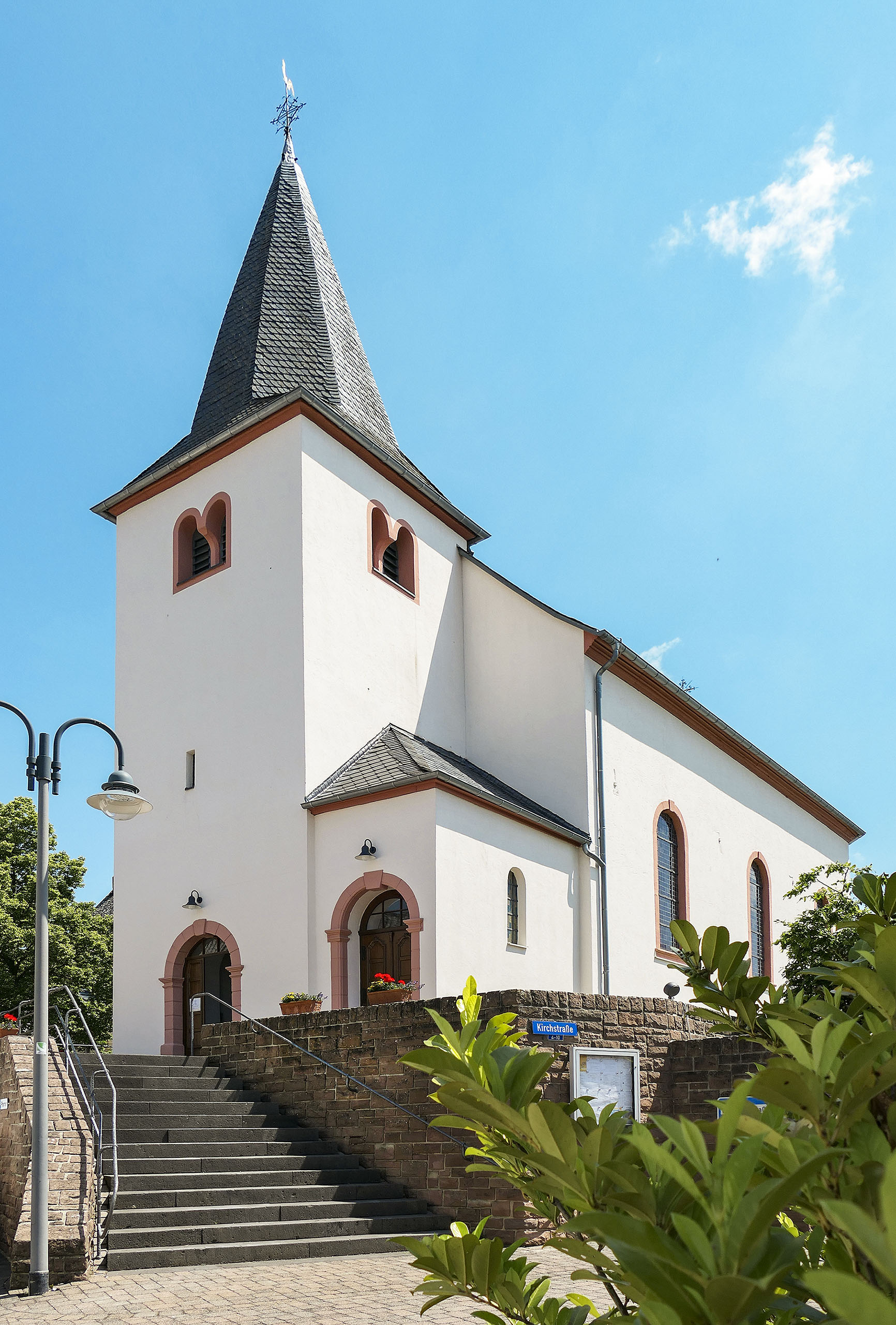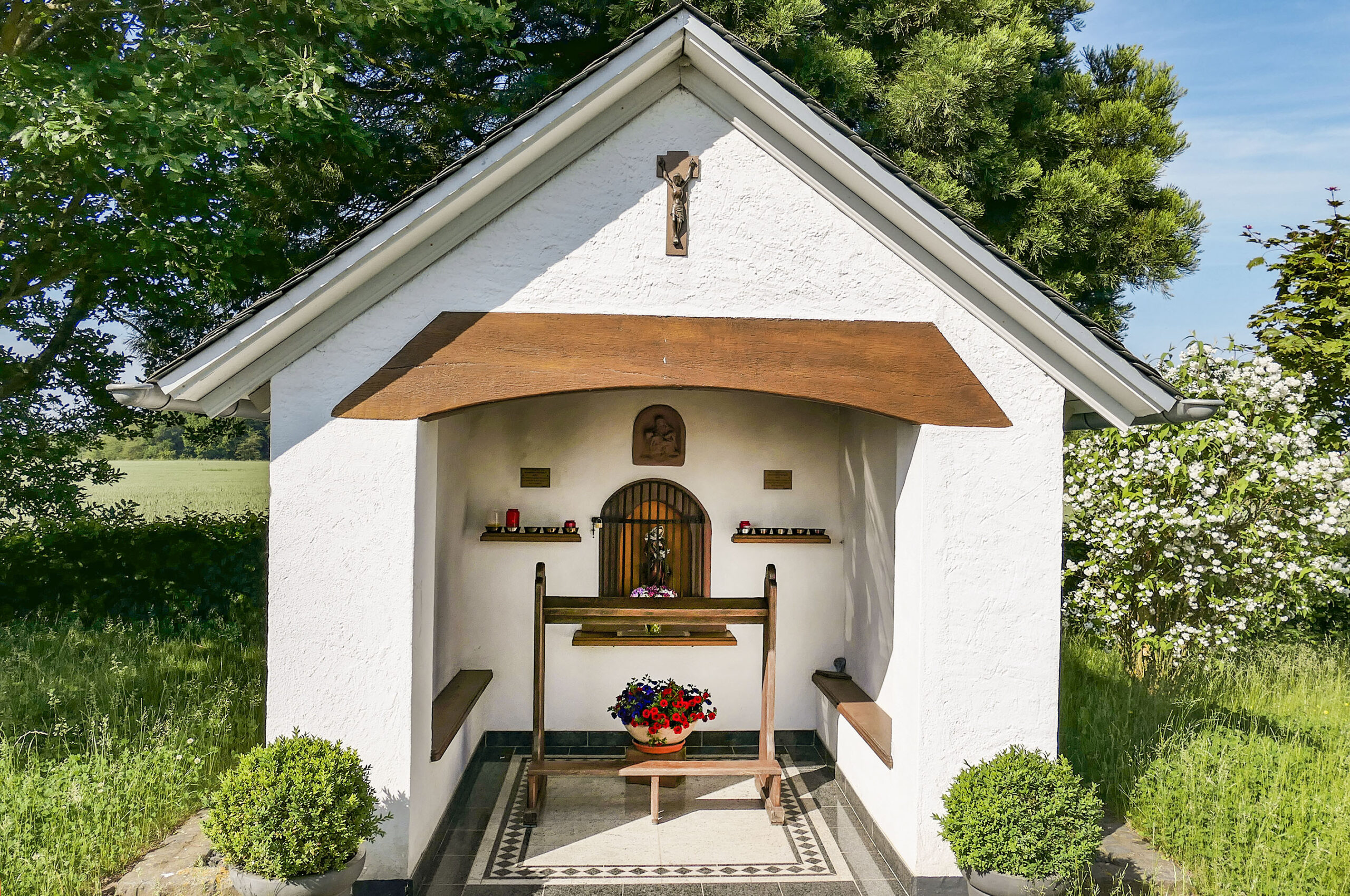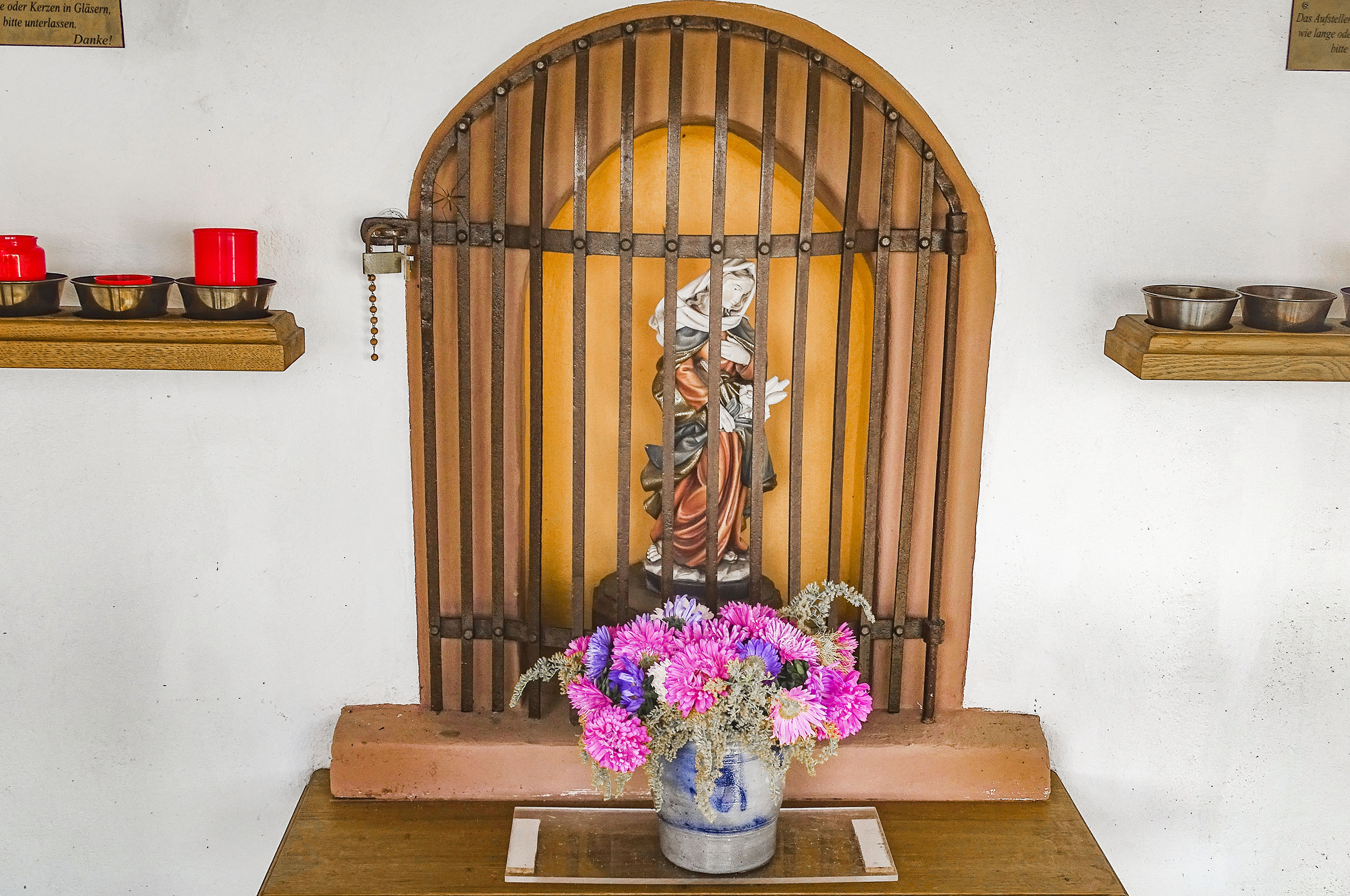Station:
Minderlittgen
The village of Minderlittgen is said to derive from the Treveri people. The first documentary mentions of the village date from 912 as Lüttaco and from 1147 and 1152 as Lideche (Minoris Lideche). Due to the location Minderlittgen on the plateau of the southern Eifel offers cyclists and pilgrims interesting views of the surrounding area.
The first news of a chapel in Minderlittgen dates back to from the year 1309: Pastor Richard von Lithiche mentions the “Chapel of the Virgin Mary” in Minderlittgen. In 1569, a church record states that this chapel had two altars and three chalices. This church was dedicated to St. Mary. Today, the patron saints are the apostles Simon and Judas, as well as St. Maurice.
In 1779, a new nave (late Baroque / Rococo style: 1725-1785) with a choir closed on three sides was added to the medieval church tower (50° 00′ 30˝ N / 6° 50′ 16˝ E).

During the reorganization of the old archdiocese of Trier by Bishop Charles Mannay in 1804, the branch towns of Minderlittgen and Hupperath was separated from the parish of Großlittgen and formed together with Bergweiler a state parish in the deanery of Wittlich. Hupperath was chosen as the parish. But Minderlittgen did not want to accept this. … At this point, it should be noted that the unintelligent and belligerent behavior of the filialists was not directed against the parishioners of Hupperath, but solely against the parishioners of Minderlittgen. only against the determination of the spiritual authorities …” (Festschrift 150 years church choir “Cäcilia” Minderlittgen).
Pilgrimages to Klausen and Trier were mentioned early on. Once abolished in 1831, the pilgrimage to Klausen was reintroduced in 1868. Relations with Klausen were not only characterized by pilgrimages and pilgrimages. In 1931, the “Turk organ”, which is still preserved today, was built by Anton Turk in Klausen at a price of 6,500 marks.
Worth mentioning is the “Bildchen” – the Marienbild cottage on the Minderlittgner Bann on the Musweiler Pfädchen. “Especially at the time of the pilgrimages to Klausen, you could see people kneeling devoutly before the image in the oak tree.” Pastor Bicking wrote in October 1852.
He went on to write ” …In a very old oak tree, in which a round stone image of the Sorrowful Mother of God, one foot in diameter carved out in bas relief, has already grown in through the length of time.” This oak was felled after being struck by lightning. The wood was sold at auction. The parish council at the time declared that this money would be used to replace the old picture of the Virgin Mary with a new picture house. It was to be placed where the oak tree used to stand. After some time and The “Bildchen” was erected and inaugurated in 1852. There is said to have been a pilgrimage route coming from Manderscheid, who went on pilgrimage past the chapel and the Marienbild-Häuschen – straight ahead – to Klausen. The Eifel pilgrims’ cycle path is now the new connecting route for pilgrims from the Eifel via Minderlittgen to Klausen.

“Bildchen” on the Minderlittgner Bann at the Musweiler Pfädchen

Marian figure in the “little picture”
Source:
- Konrad, J. (1996): 150 Jahre Kirchenchor “Cäcilia” Minderlittgen, Festschrift.
- Filialkirche Minderlittgen (p. 1240ff) in Hesse, G. & Wiseniewski, A. (1990): Wittlich-Land – Geschichte einer Verbandsgemeinde zwischen Vulkaneifel und Mosel, VG-Chronik.
Spirituality – Sensing the spiritual world
Hail Mary Young people I imagine, Mary, that you were young, lively and full of questions, that you laughed with other girls and women at the well, telling your dreams and wishes. You were betrothed to Joseph. We don’t know if you were happy, but you certainly imagined your life like others: the wedding, being one with Joseph, children, work, neighbors, parties – all arranged in faith in Yahweh. But HE suddenly knocked on your door. You let him in and everything changed. I imagine, Mary, that you were often miserable after the “yes”, that you would have loved to take it back, even later, when no one was talking about your “Voreile” clapped – even then, when Jesus grew up. That you persevered, Maria – I am amazed! When I see you like this, Maria, as a person who always struggles to say “yes”. you have a lot to tell me.
Text / right of use: Christa Peikert Flaspöhler (1927-2016), Das Bökenförder Gnadenbild – Ein Wallfahrtsbuch, p. 36: Ave Maria junger Menschen, Familienbund der Katholiken im Erzbistum Paderborn / St. Dionysius Bökenförde
